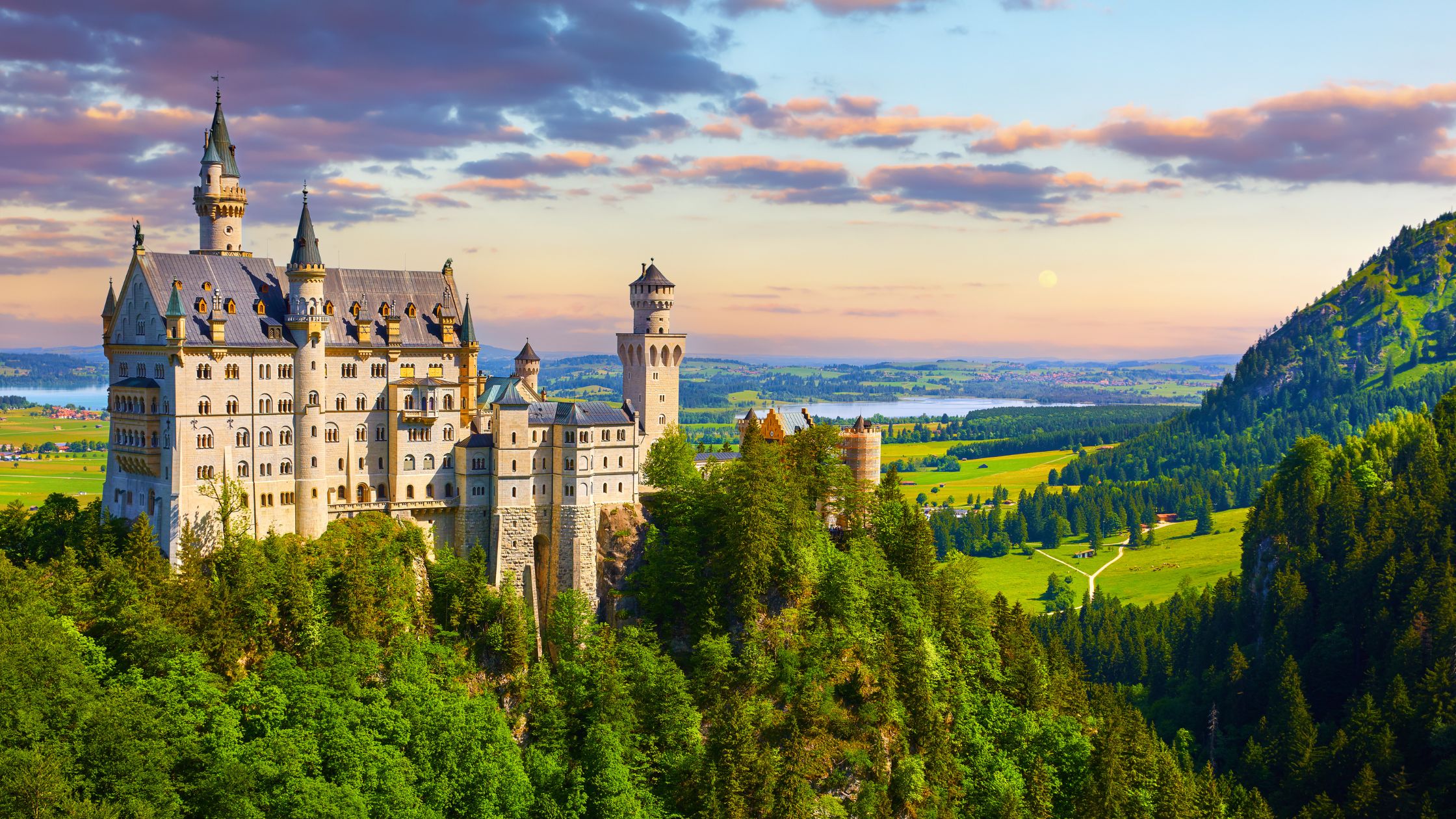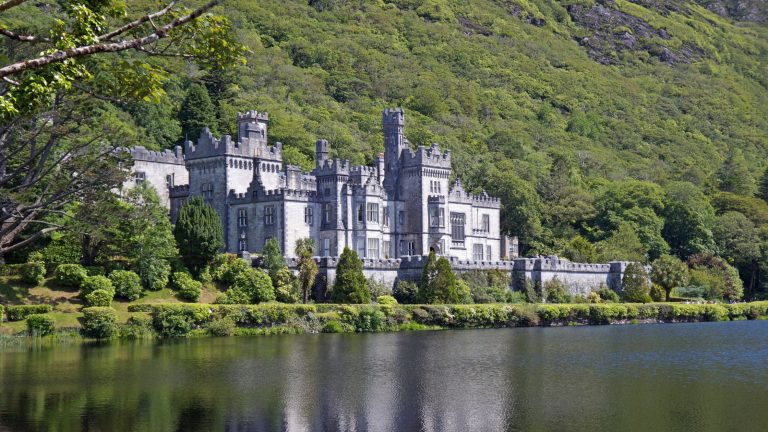Germany beckons with crystalline alpine lakes, medieval castles perched above sapphire waters, and charming lakeside villages that seem plucked from fairy tales. But timing your German adventure correctly transforms a good vacation into an unforgettable journey, especially when you’re coordinating family schedules, planning for furry companions, or organizing that multigenerational reunion everyone’s been dreaming about.
Understanding Germany’s seasonal rhythms helps you match your travel style with the perfect conditions. Whether you’re seeking sun-drenched summer swimming, peaceful autumn lakeside walks, or magical winter markets reflected in still waters, to visit Germany and see its diverse climate offers you distinct experiences year-round.
What Are Germany’s Peak, Shoulder, and Off Seasons?
Germany’s peak season stretches from June through August, when Europeans take their summer holidays and lakeside accommodations fill quickly. Shoulder seasons—April to May and September to October—offer ideal weather, fewer crowds, and better value, making them favorites among savvy travelers who appreciate elbow room at popular destinations.
The off-season, November through March (excluding Christmas markets), offers the lowest prices and quietest lakesides. While swimming isn’t on the agenda, winter’s stark beauty transforms Germany’s lake regions into peaceful retreats perfect for cozy cabin stays and contemplative walks along frosted shores.
Spring in Germany: March Through May
March: Early Stirrings
March in Germany feels like nature’s gentle awakening. Temperatures hover between 40-50°F (4-10°C), and while lakeside swimming remains a few weeks away, the emerging landscapes hold their own magic.
This is when Germany shakes off winter’s slumber, and you’ll find excellent availability at lake houses around destinations like Lake Constance and Chiemsee. Prices sit comfortably in the off-season range, offering exceptional value to early-season visitors.
Family-Friendly Activities: Nature trails around Bavaria’s lakes come alive with spring wildflowers, offering easy hikes perfect for young explorers. Indoor alternatives abound at lakeside towns’ museums and aquariums, with spaces like Sea Life Konstanz providing rainy-day entertainment for restless children.
Pet Paradise: Spring’s cooler temperatures make for comfortable hiking conditions for your four-legged family members. Many lakeside trails remain uncrowded, letting Scout or Luna explore without the summer throngs, and muddy paws are simply part of the authentic spring experience.
April: Awakening Waters
April transforms Germany’s lake regions into painterly landscapes worthy of the Romantic poets. Average temperatures climb to 50-60°F (10-15°C), and shoulder-season pricing sweetens the deal for budget-conscious planners.
Easter holidays (dates vary) bring German families outdoors, so booking accommodations early proves wise. Yet you’ll still find far more breathing room than summer’s peak crowds.
Shore Activities: Lakeside cycling routes around destinations like Müritz National Park’s waters become accessible as snow melts completely. Rent electric bikes to accommodate varying fitness levels across generations—grandparents and grandchildren can explore together without exhaustion dampening spirits.
Cultural Immersion: Traditional spring festivals dot lakeside communities throughout Bavaria and Baden-Württemberg. These authentic celebrations, attended mainly by locals rather than tourists, offer genuine cultural connections that enrich any vacation beyond simple sightseeing.
May: Perfect Balance
May arguably delivers Germany’s most balanced conditions—warm enough for outdoor adventure at 55-65°F (13-18°C), yet preceding summer’s peak-season prices and crowds. Lake waters begin reaching swimmable temperatures for hardy souls, though most save water activities for June.
This month marks the true shoulder season sweet spot. Accommodation availability remains strong, families haven’t yet broken for summer holidays, and Germany’s legendary efficiency means everything runs smoothly without overwhelming visitor numbers.
Multi-Generational Magic: May’s mild weather accommodates everyone from toddlers to great-grandparents. Gentle steamboat cruises across Lake Constance or Chiemsee let mobility-challenged relatives experience the water’s beauty without physical strain, while energetic teens can kayak or paddleboard nearby.
Garden Wonders: Mainau Island on Lake Constance bursts into spectacular bloom, creating Instagram-worthy backgrounds for family photos. The tulip displays alone justify the visit, and children delight in the island’s butterfly house and petting zoo.
Summer in Germany: June Through August
June: Season’s Opening
June marks Germany’s peak season, with temperatures rising to 65-75°F (18-24°C). Lake waters reach genuinely comfortable swimming temperatures, and suddenly those private docks you’ve been eyeing become the hottest commodity in German vacation rentals.
Book accommodations three to six months ahead for prime locations. Popular destinations like Tegernsee, Starnberg, and Lake Constance fill up quickly, especially properties with direct water access and pet-friendly policies.
Water Wonderland: Swimming, paddleboarding, kayaking, and sailing dominate June’s activity roster. Shallow, gradually deepening beaches around lakes like Ammersee provide safe swimming areas where parents can relax while children aged 5-12 splash under watchful eyes.
Pet-Friendly Perfection: Many Bavarian lakes feature designated dog beaches where your golden retriever can swim freely. Properties near these areas often offer outdoor showers for rinsing sandy, wet dogs—a thoughtful amenity pet-first travelers deeply appreciate.
July and August: Peak Perfection
These months represent Germany’s absolute peak season, with temperatures soaring to 70-85°F (21-29°C). Everyone wants lakeside access now, and prices reflect this universal desire.
Crowds swell, restaurants require reservations, and that charming beer garden overlooking the water? Arrive early or face disappointment. Yet there’s undeniable magic in Germany’s high summer that justifies the premium.
Family Central: Children’s swimming lessons, youth sailing camps, and organized kids’ activities proliferate around major lakes. Many larger vacation properties offer shared amenities like playgrounds and game rooms, helping kids bond while adults coordinate reunion logistics.
Accessibility Considerations: Peak season’s infrastructure advantages benefit multigenerational groups. Frequent boat services, abundant dining options with varied menus (accommodating picky eaters and dietary restrictions), and readily available equipment rentals simplify complex family coordination.
Strategic Planning: Book the most significant properties or property clusters for big family gatherings. Locations with multiple bedrooms in single-level layouts work beautifully for elderly relatives, while fenced yards provide peace of mind for families traveling with both young children and energetic dogs.
Autumn in Germany: September Through November
September: Golden Shoulder Season
September emerges as many experienced travelers’ secret favorite month. Temperatures remain pleasant at 60-70°F (15-21°C), lake waters retain summer’s warmth, yet crowds thin dramatically as families return to school routines.
Shoulder season pricing returns, delivering 20-30% savings compared to July and August. Accommodation availability opens up, though weekends still book quickly around popular lakes.
Harvest Celebrations: Wine festivals along Lake Constance’s shores and Bavaria’s lake regions celebrate autumn’s bounty. Sample new wines, taste regional specialties, and enjoy folk music performances that enrich cultural experiences beyond typical tourist fare.
Active Adventures: Hiking conditions reach their annual zenith. Crystal-clear autumn air offers unprecedented visibility across Alpine lakes, and cooler temperatures make ambitious trails manageable for families with varying fitness levels.
October: Spectacular Foliage
October paints Germany’s lakesides in extraordinary autumn colors. Temperatures cool to 50-60°F (10-15°C), and while swimming season concludes, the visual spectacle intensifies.
This remains excellent shoulder season territory. Prices stay reasonable, crowds remain minimal, and the atmospheric autumn ambiance creates memorable photography opportunities that summer’s bright sunshine cannot match.
Lakeside Leisure: Comfortable walking temperatures invite multigenerational strolls along promenades circling lakes like Tegernsee. Stop at traditional cafés for Kaffee und Kuchen (coffee and cake), warming up while bonding across generations.
Pet Bliss: Cooler weather means comfortable conditions for energetic dogs needing extensive exercise. Off-leash areas around many lakes accommodate well-behaved canine companions, and outdoor dining at lakeside restaurants remains viable with proper layering.
November: Quiet Contemplation
November transitions into off-season territory as temperatures drop to 40-50°F (4-10°C). Most visitors have departed, and the lake regions settle into peaceful quietude.
Accommodation prices plummet, sometimes reaching 40-50% below peak rates. If your priority is serene reflection, cozy indoor time, and budget-consciousness over outdoor activities, November delivers compelling value.
Indoor Appeal: Rainy days (common in November) drive families toward indoor attractions. Germany’s exceptional museums, thermal spas near Alpine lakes, and charming historic town centers provide shelter while maintaining vacation enjoyment.
Winter in Germany: December Through February
December: Market Magic
In December, German lake towns transform into fairy-tale settings straight out of storybooks. Temperatures range from 30-40°F (-1 to 4°C), and while outdoor swimming isn’t happening, the Christmas market season creates enchanting alternatives.
Markets around lakes like Konstanz and Chiemsee offer mulled wine (Glühwein), handcrafted gifts, and nostalgic atmospheres. Children’s faces glow in carousel lights, roasting chestnuts perfume the air, and lake reflections double the twinkling illumination.
Family Traditions: Ice skating rinks appear in many lakeside towns. Rent skates for the whole clan, wobble around together laughing, then warm up with hot chocolate while recounting everyone’s tumbles and triumphs.
Property Considerations: Ensure your rental offers robust heating and, if possible, a fireplace. Cozy properties transform winter’s chill into hygge-inspired comfort, perfect for card games, storytelling, and quality family bonding time.
January and February: Deep Off-Season
These months represent Germany’s absolute quietest period. Temperatures bottom out at 30-40°F (-1 to 4°C), snow occasionally blankets lakesides, and tourism infrastructure operates on reduced schedules.
Prices hit annual lows, and availability is virtually unlimited. If your group values absolute privacy, rock-bottom rates, and doesn’t require extensive dining or activity options, winter’s solitude offers unique appeal.
Winter Activities: Sledding hills near Alpine lakes, cross-country skiing along frozen shorelines, and brisk morning walks through silent forests provide active options for cold-weather enthusiasts. Return to warm cabins for board games, puzzles, and unstructured family time —something increasingly rare in modern life.
Pet Comfort: Many dogs love winter weather, and Germany’s lake regions offer peaceful trails free from summer’s crowds. Just ensure your rental’s yard is adequately fenced and that indoor spaces accommodate wet, muddy paws after snowy adventures.
When Should You Visit Germany’s Lake Regions?
Your ideal timing depends entirely on priorities and constraints. Families with school-age children realistically face July-August windows, making early booking absolutely critical—six months ahead isn’t too early for prime lakeside properties.
Multi-generational groups coordinating across different states might find September or early October’s shoulder season ideal. Better availability, reasonable weather, reduced crowds, and significant savings make logistics smoother when you’re already juggling complex schedules.
Pet-first travelers should consider spring (April-May) or fall (September-October) for comfortable temperatures that keep tails wagging without overheating. Summer works beautifully if you secure properties near designated dog beaches and book early enough to guarantee pet-friendly accommodations.
Ready to Discover Germany’s Lakeside Magic?
Germany’s lake regions reward visitors year-round, each season offering distinct advantages. Summer delivers classic vacation experiences—swimming, sailing, sunshine—while shoulder seasons provide value and breathing room. Even winter’s contemplative quiet holds appeal for certain travelers seeking retreat from hectic modern life.
The best time to visit Germany ultimately aligns with your family’s unique needs, whether that means prioritizing safety features and accessibility for the Explorer Family, finding properties that genuinely welcome dogs rather than merely tolerate them for Pet-First Travelers, or coordinating that long-planned reunion for Legacy Gatherers bringing together generations.
Start planning now, and soon you’ll find yourself standing on a private dock, watching sunrise paint the Alps in rose and gold while lake waters lap gently below. That’s the Germany you’ve been dreaming about—and now you know exactly when to experience it.






